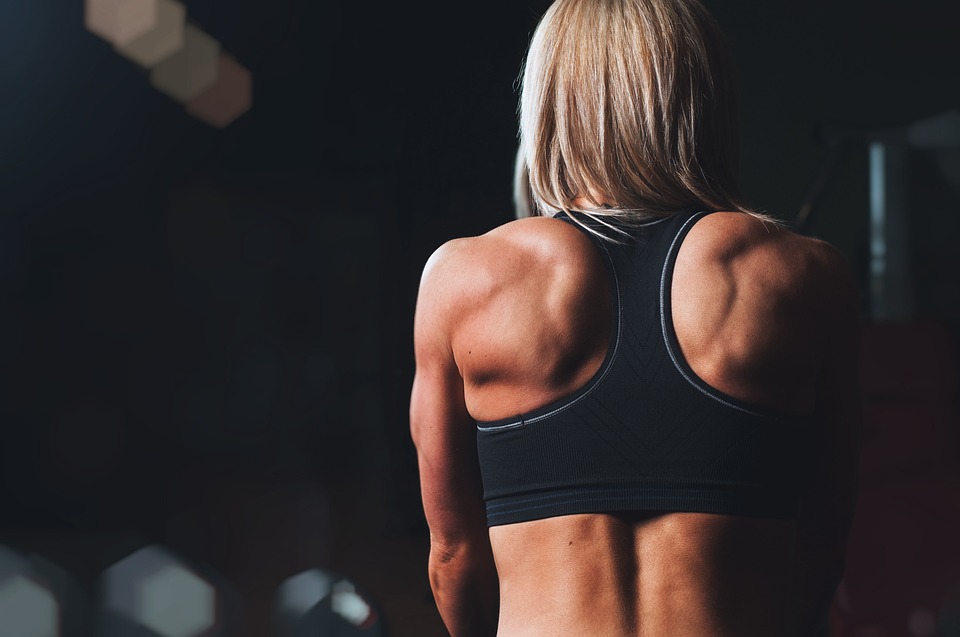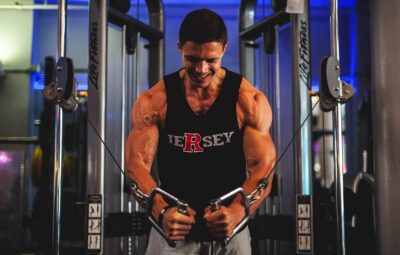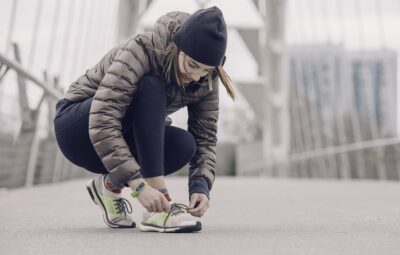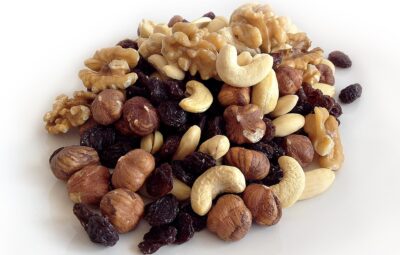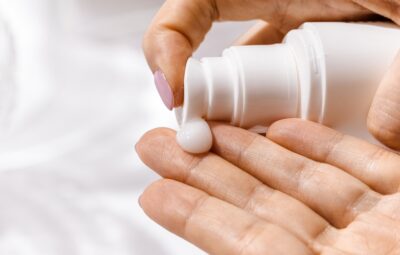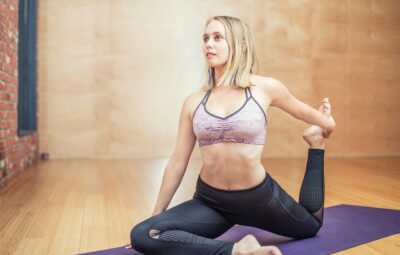It has been said that enhancing your core strength can improve your lifting performance, posture and reduce any back pain you may have. So why isn’t it working?
What Do Abs Do?
The outdated notion that one needs to “suck in” their abdominals, “tighten them”, or “push their naval into their spine” when engaging their core is a fabrication. Trying to move or exhale with this stance is not only ill-advised but unnatural. Bending your arm does not require your muscles to be tensed; the movement is accomplished by manipulating your arm bones with the help of your arm muscles. Abdominal muscles work the same way. Your abdominal muscles attach your ribs to your hips, both on your stomach side and your backside. When you engage your abdominal muscles, it causes your ribs and hips to move closer together, creating a curvature in your spine facing forwards or to the side.
If you don’t engage your abdominal muscles while standing, it permits your ribcage and pelvis to be spaced too far apart. Your low back sways, exaggerating the normal inward curve. Bending your spine in this manner causes the load of your upper spine to be distributed to your lower spine, deteriorating the soft tissue and discs, as well as provoking the joints, which are known as facets, where your vertebrae join up one after the other.
When do people arch like this? When they stand up. When they look up. When they reach up. When they take up a container such as a washing basket, chair, or infant, a lot of people have such poor posture that even raising their shoulders and taking a sip of water involve leaning back. Many individuals suffer from back pain due to poor posture, but the issue can be remedied easily.
Try this:
- Stand up and put one hand on the front of your hip bone where your abs begin. This will be close to the bottom of your pant’s zipper. Put your other hand on your ribs where your abs end. Draw your two hands toward each other, curling your torso forward. This is how many people exercise their abs when doing crunches, but you don’t need this posture often in daily life.
- To see what happens when you don’t use your abs, still holding your ribs and hip bone, arch back and let your ribs lift and your abdomen curve out. The distance between your hands increases, showing how slack ab muscles allow your back to arch. Your body weight falls onto your low back.
- The ways abs need to work for your real life is to keep your spine from overly-arching backward or slouching to the side. To use abs to stand up properly, curl your hands toward each other, so your torso comes upright to a straightened, taller position. This is how abs control posture and stop the strain of dropping your body weight on your low back. It is not tightening your abs that helps your back, it is using your muscles to move your spine out of an overly arched to a healthier position.
If you don’t believe that “tightening” is not how to use your abs, try the following:
Tighten abs, as commonly taught. Press your navel to your spine. Tighten the entire area. Now breathe. It would not be practical or beneficial to attempt to make daily routines more stringent.
Next, stand with arched posture. Tighten the abs and surrounding musculature. Note that posture does not change.
Stop tightening the area so that movement is unrestricted. Be aware of tucking the spine and hip, which will result in getting rid of the lordotic arch and advancing a more upright stance. Strengthen your core muscles by utilizing them to maintain a healthy posture during any activity.
What Is Lordosis?
A lot of people who suffer from back pain are informed that they are afflicted with a medical issue identified as lordosis. They believe this is an inherent trait, unavoidable, or something that transpires without warning, like the influenza virus.
The term “lordosis” originally meant the regular inward bending of the lower back. It is usually seen as having an excessive inward bend, allowing the back to sway. Poor posture can result in various forms of back discomfort, yet is only a poor habit.
This extreme slouching position is frequent in many exercise-focused videos, magazines, literature, and classes. The person in the video may emphasize maintaining a neutral spine. Still, if you observe closely, they are exhibiting an arched back and protruding their buttocks while performing a variety of activities such as leg lifts, weight lifting, and aerobics.
It is possible to bring the Lordosis back to a normal posture with minimal inward curvature of the lower back by using the previously mentioned methods to attain a smooth, upright pose. It is not a matter of “tensioning” your muscles that allows you to stand with correct posture; it is simply a conscious effort to move your spine. Perform this action while participating in all of your activities and in relation to all the items you possess.
If you often stand with your spine curved, your back may become so rigid that you can’t stand upright. No amount of ab exercises will be able to improve your posture if you are accustomed to adopting a slumped-forward or “booty-out” position. You just need to stretch and retrain your posture. Future articles will cover this.
The Structure of the Spine
A simple anatomy lesson might be helpful here. The spine contains 33 individual bones, including five vertebrae that together compose the sacrum and four vertebrae that compose the tailbone. There are 24 vertebrae found in three different areas of the body; the C1-C7 cervical vertebrae, located at the base of the skull; the 12 T1-T12 thoracic vertebrae, to which the ribs are connected; and finally, the L1-L5 lumbar vertebrae in the lower back above the sacrum (S1-S5). A disk is situated in between each vertebra, providing cushioning that prevents jarring and maintains spinal suppleness. When the spine is put under a large amount of pressure due to holding the body’s weight as well as any extra weight being thrown onto it when one is bending and twisting with the items in their possession, it is readily understandable why these disks get hurt. The most critical harm to the disk is herniation– a distressful situation where the jelly-like core of the disk is pressed out as the disk breaks, putting direct pressure on significant nerves as they leave the spinal cord.
The abdominal muscles serve as a major protective layer for the lower back disks. They provide defense by preventing too much turning of the lower back and by governing the inclination of the pelvis, which therefore affects the shape of the spine.
Each area of the spine is described by its own particular curve: the lumbar region bends inward, the thoracic area bows outward, and the cervical part presents a bowed shape going inward again. The locations between the curves of the backbone are incredibly susceptible to harm because they are the areas with the highest degree of motion. The link between the sacrum and the lumbar spine requires particular attention, since it allows a greater range of movement than any other part of the lower back.
Our postural habits can contribute to this problem. Pause to inspect the manner in which you are seated. Do you perch on the front of your seat and arch your spine? Do you slump in the chair with your lower back unsupported? Do you lean more heavily on one hip than the other, or even tilt to one side and tuck the opposite leg under you? The practices of these behaviors exert extreme and one-sided strain on the intervertebral discs in your back, with a special focus on the L5 vertebra. Taking into account the frequency when you spin around to answer the phone or to do a different task (placing more strain on your back), it is not shocking that the way you stand can lead to hurts in your lower back.
How To Use Your Abs For Lifting Things Overhead
Many people arch their back when reaching overhead. This enables the cumulative weight of both their torso and whatever they are lifting to bear down on their lower back. They do the same thing repeatedly every day, such as organizing items, taking off tops, and grooming and washing hair. Imagine the damage that accumulates.
Try this: Stand up and reach overhead. Find out if you can raise your ribcage and cause your spine to curve.
Correct the placement of your body by aligning it, like you would while performing a crunch. Do not hunch your neck and lower back over, which would cause an extreme curve in both. Then reach up again, holding this new proper posture. You will feel like you are using the muscles in your torso to support your body weight. You may also feel your shoulders getting more reach.
Apply this same approach to any situation in your life requiring the lifting or positioning of something heavy – like loading gear, stowing cargo, elevating parcels onto shelves, or when it’s necessary to pick something up and put it somewhere. The equipment that you use could act as an internal abdominal workout in order to maintain the correct posture when lifting something heavy in front of you. When lifting a chair, a kid, or any item, don’t lean backward to try to balance the weight. Rather, rely on your abdominal muscles. When you are in the shower washing your hair, be mindful of if your back is curved and if you’re relying on your lumbar area to support your body weight. Correct your poor position by using your abdominal muscles to adjust your spine. If you routinely employ your abdominal muscles in this way, you should observe a major decrease in your back discomfort.
AB Therapy
The abdominals are a major form of protection for the lumbar vertebral disks from wear. They provide two types of defense: restraining an unreasonable level of twist in the lower back area and overseeing the tilt of the pelvis and the curve of the spine thusly. Before you start doing sit-ups on the ground, take a second and keep reading.
The abdominals consist of four separate muscles – rectus abdominis, inner obliques, outer obliques, and transversus abdominis. Two muscle straps, often noted as making up a ‘six-pack,’ are actually the rectus abdominis. Most of the commonplace abdominal workouts, including curls, crunches, and sit-ups, concentrate on the rectus abdominis, which, however, does not lend much aid to maintain and balance the spine. If these two muscles become too large, they tug down on the rib cage, causing the upper back to become curved and tension to develop in the neck, upper back, and shoulders. An uneven distribution of strength in the abdominal muscles can prevent the other core muscles from working properly, thus affecting the stability of our backs.
The obliques are the most critical abdominal muscles in keeping good posture.
It may come as a surprise, but the obliques are the most critical abdominal muscles when it comes to maintaining posture. The external obliques, positioned at either side of the rectus abdominis, are the muscles that give the most protection against the rotational strains experienced by the lower back. They connect to the seven bottom ribs and to the pelvic bones. By pushing your rib cage one way and your pelvis in the other, the external obliques work to stop the lumbar spine from rotating too much. They also help control the pelvic tilt. They can counterbalance an overly curved lower back by angling the pelvis towards their back (posterior).
The internal obliques are located under the external obliques and stretch from the lower ribs down to the interior of the hip bones. When contracted, the muscles firm the abdominal area and bring the lowest ribs close to the area below the navel as the spine leans forward. These muscles don’t alter the positioning of the pelvis like the external obliques do; instead, they give backing to the sacrum. Furthermore, they help the external obliques to perform rotary movements.
The transversus abdominis is the muscle that lies most deeply beneath the surface, encircling the waist horizontally. It provides support around the waist and stomach, similar to that of a belt, cinching it in from all angles. The transversus abdominis is triggered by drawing your belly button towards your backbone or when you sneeze.
How to Tone the Right Muscles
What exercises can you do to increase the strength of these muscles, particularly the external obliques? It’s not through abdominal exercises like sit-ups and curls, which can cause over development of the rectus abdominis, in addition to strengthening the hip flexors. The most effective way to target the external obliques is to do leg exercises that test their capacity to keep the pelvis from leaning forward. For instance, if you lie on your back with your legs in a 90 degree angle to the floor, tense your abdominal muscles to steady the pelvis and then slowly lower your legs (keeping them stiff), your abdominal muscles will have to work really hard to stop the pelvis from tilting forward.
Most of the usual ab workouts–like curls, crunches, and sit-ups–mainly focus on strengthening the rectus abdominis. However, the rectus abdominis does not offer much in the way of aiding and steadying the spine.
Navigating half boat pose (ardha navasana) requires a similar degree of effort. It is wise to gradually build up to the oblique exercises since many of us are not as strong in that area, even if the other ab muscles are strong. If you work out too strenuously too soon, your hip flexors, which are usually more developed and tauter than the abdominals that are not used as much, could put strain on the back and pelvis, possibly boosting the curve in the lower portion of your spine and thus applying a shearing pressure on it. Staying with your lower back in a straight line against the ground while performing these exercises will help shield your spine from the tension of the hip flexors on an too curved back. The end result of toning the muscles in the lower abdominal area will help safeguard your lower back when performing everyday activities.

